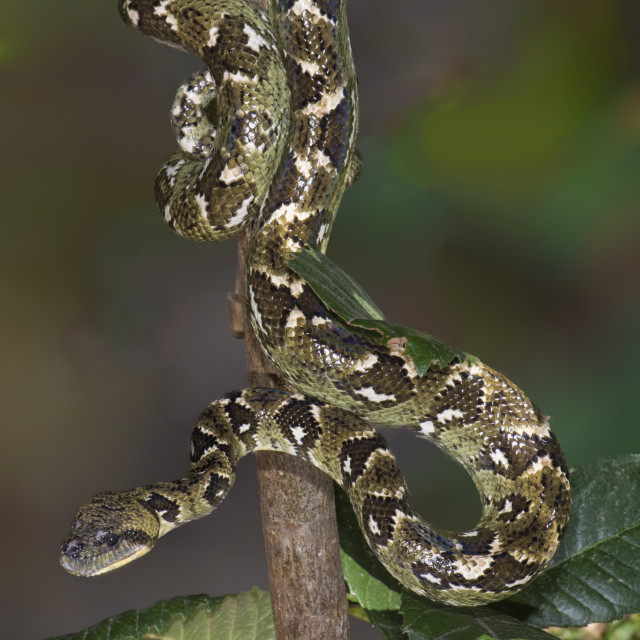ANIMAL: Madagascar Tree Boa Sanzinia madagascariensis Type of Animal: Boa/Python Habitat: Tree/shrub/forested areas near streams/rivers/ponds/swamps/other water bodies, tropical forest, dry forest, degraded forest, plantations, human settlements Location(s): Madagascar except for SW corner & offshore island of Nosy Be Appearance: Grayish-green to green form in E half of range 2/3 smaller than mandarin form (yellow, orange, & brown) in W half of range, females larger than males, spots on both forms, bright red at birth, pregnant (gravid) females have darker skin Food/Diet: Birds, lemurs, rodents, tenrecs, mongooses, bats, amphibians, lizards, other snakes (including smaller members of own species & young of larger species) Status in Wild: Stable Conservation: Breeding from zoos, wildlife parks, aquariums, & private breeders Lifestyle: Solitary Additional Info: Called: Male Female Young-Snakelet Group-Solitary Weight: Male-7 lbs Female-13 lbs Gestation: 6 months Life Span: 15-20 years Body Length: Male-5 ft Female-6 ft Young-2 ft Tail Length: Male-1.5 ft Female-2 ft Main predators of adults are fossas, large raptors, crocodiles, introduced dogs, & introduced cats. Other boas, smaller raptors, & pigs prey on young. Like other boas, they give birth to live young, which hatch inside mom. While they do spend time in trees, they also spend fair amount of time on ground as well. They usually hunt at night, using heat sensitive pits to detect prey. Potential threats are pet trade, persecution due to fear & for killing chickens, habitat loss, deforestation, human settlement, agriculture, mining, & introduced predators. Kills prey by constricting & swallowing it whole. Sexually mature at 2-3 years. Uses color as camouflage to attract prey & avoid predators. Breeds most often from November-February but can breed year round. Young bright red as form of mimicry to fool predators into thinking they’re poisonous. Males fight by pushing each other to the ground. Fun Fact(s): Known locally as manditra. Young boas can be unpredictable while adults fairly docile.
